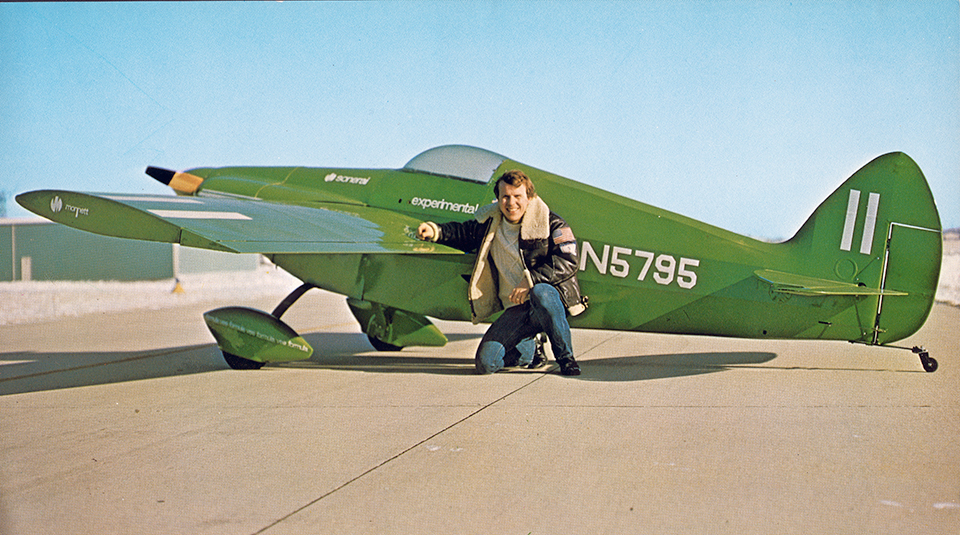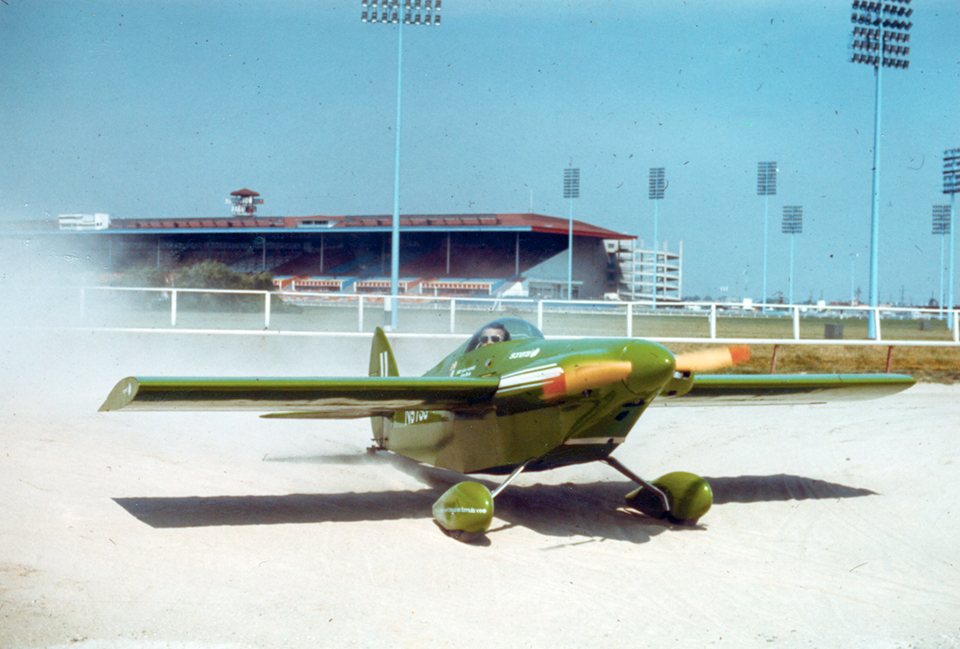1971 Monnett Sonerai I - N11ME (N5795)
Location: Storage
The Sonerai (Son-eh-ray) is a name that is meant to be unusual. It came from playing with phrases like sun ray and sonic ray and was also meant to convey the meaning of something fast. John Monnett, EAA Lifetime 15941, designed it to meet a series of very specific requirements. First, it had to comply with the regulations for Formula Vee racers stipulated at the time by the Professional Race Pilots Association (PRPA); second, it had to have metal wings and a tube fuselage; third, it had to use simplified techniques in construction; and fourth, it had to have folding wings and a simple, inexpensive way of transporting it on the highway.
The aircraft in the EAA Aviation Museum is the prototype Sonerai, and was first registered as N5795. John had just attended EAA Oshkosh ’70 with his first homebuilt, the “Mini #@!!%” that he was none too happy with. He realized the potential use of the VW engine in airplane applications and was intrigued with the wide-open field of the Formula Vee class racers after hearing Steve Wittman speak at a forum in 1968.
By the time John returned home to Illinois after Oshkosh, the new airplane was beginning to take form in his mind. He knew he wanted to build it right away, and wanted it finished by the 1971 Oshkosh fly-in. With his requirements in mind, the design for the midwing racer quickly took shape. It uses a minimum of different sizes of easily obtainable materials to reduce the cost without hampering the integrity of the design. The wing is all aluminum and is composed of two panels that fold alongside the fuselage enabling the Sonerai to be towed tail first on its own gear. The fuselage and tail surfaces are of standard chromoly tubing construction using primarily two sizes of tubing. All aluminum sheet used is .025 Alclad except for the spar webs. The cowling is fiberglass and the fuselage and tail surfaces are fabric covered. The landing gear is a modified truck spring with 5-inch go-cart wheels.
John’s friend Dwight Dende became interested in the concept and he and John decided they could build two planes faster and cheaper together than if they each built one separately. So, they agreed to build two racers and split the cost. By the end of December they had the fuselage trusses and tail surfaces built and had started the spars. They made steady progress and soon they had purchased the canopies and landing gear legs. The spars and wing folding parts were completed, the rib blanks were cut out and they began forming the ribs. Next came assembling the four wing panels, fitting the skins, and then riveting the skins on.
In May came the engines and the simple prop extensions. The engine mounts, canopy frame, instrument panel, fuel tank, control links, and front end metal all followed in quick order. Then it was June and they realized there was no way they were going to complete both airplanes. The decision was made to finish John’s plane first. First came the pre-cover inspection, and then the aircraft was covered in a week. After that, the engine was installed and they tried to start it, a simple procedure that only took 45 days. So they went ahead with finishing the cowl and doing the final paint job. John said they now had the world’s fastest static display. By mid-July they had finally resolved the problems with the engine.
On July 20, 1971, just eight months after they started, John flew the Sonerai. The first flight went well except for a very sensitive elevator which was easily corrected. On July 29, two days before Oshkosh, while flying the aircraft, John lost power on takeoff. He was able to land the plane without incident, but they towed the aircraft to Oshkosh and put it on static display. With the help of some airplane folks at Oshkosh, they were able to fly the plane during the convention and won awards for Best Formula Vee and Most Outstanding Contribution to Low-Cost Flying.
John donated the Sonerai prototype to EAA in 1980.
For more information on the Sonerai and John’s VW engine conversions, see the March 1972 and July 1973 issues of Sport Aviation magazine.
Length: 16 feet, 8 inches
Wingspan: 16 feet, 8 inches
Empty Weight: 440 pounds
Gross Weight: 700 pounds
Cruise Speed: 150 mph
Maximum Speed: 170 mph
Seats: 1
Powerplant: 1,600 cc Volkswagen conversion







